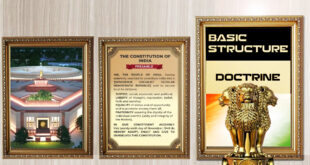- Chhattisgarh Chief Minister wrote to Prime Minister seeking the inclusion of two amendment Bills allowing for higher quota in jobs and educational institutions, in the Ninth Schedule of the Constitution.
- The Ninth Schedule includes a list of Central and State laws which cannot be challenged in courts.
- In Chhattisgarh’s case, the two amendment Bills that pave the way for a 76% quota for Scheduled Castes, Scheduled Tribes and Other Backward Classes, were passed unanimously by the Assembly, but are yet to receive a nod by the Governor.
Need for the bill:
- The socio-economic and educational condition of the OBC people of the State is as weak as that of the SC/ST people.
- Three-fourths of these classes are farmers, marginal and small farmers and a large number of them are agricultural labourers.
High Court ruling
The Chhattisgarh High Court struck down a 2013 State government order to allow a 58% quota, holding that reservation above the 50% ceiling was “unconstitutional”.
What is the Ninth Schedule
- The Ninth Schedule contains a list of central and state laws which cannot be challenged in courts.
- Most of the laws protected under the Schedule concern agriculture/land issues.
Origin:
- The Schedule became a part of the Constitution in 1951, when the document was amended for the first time.
- It was created by the new Article 31B, which along with 31A was brought in by the government to protect laws related to agrarian reform and for abolishing the Zamindari system.
- While A. 31A extends protection to ‘classes’ of laws, A. 31B shields specific laws or enactments.
Rationale of the schedule:
- The rationale for Article 31-B and the Ninth Schedule was to protect legislation dealing with property rights and not any other type of legislation.
- But, in practice, Article 31-B has been used to invoke protection for many laws not concerned with property rights.
- Article 31-B is thus being used beyond the socioeconomic purpose for which it was enacted.
How many laws are added?
- The First Amendment added 13 laws to the Schedule.
- Subsequent amendments in 1955, 1964, 1971, 1974, 1975, 1976, 1984, 1990, 1994, and 1999 have taken the number of protected laws to 284.
- Are laws in the Ninth Schedule completely exempt from judicial scrutiny?
- While the Ninth Schedule provides the law with a “safe harbour” from judicial review, the protection is not blanket.
Supreme Court verdict:
- When a Tamil Nadu law was challenged in 2007 (I R Coelho v State of Tamil Nadu), the Supreme Court ruled in a unanimous nine-judge verdict that while laws placed under Ninth Schedule cannot be challenged on the grounds of violation of fundamental rights, they can be challenged on the ground of violating the basic structure of the Constitution.
- The laws cannot escape the “basic structure” test if inserted into the Ninth Schedule after 1973.
- It was in 1973 that the basic structure test was evolved in the Kesavananda Bharati case as the ultimate test to examine the constitutional validity of laws.
SOURCE: THE HINDU, THE ECONOMIC TIMES, PIB
 Chinmaya IAS Academy – Current Affairs Chinmaya IAS Academy – Current Affairs
Chinmaya IAS Academy – Current Affairs Chinmaya IAS Academy – Current Affairs



